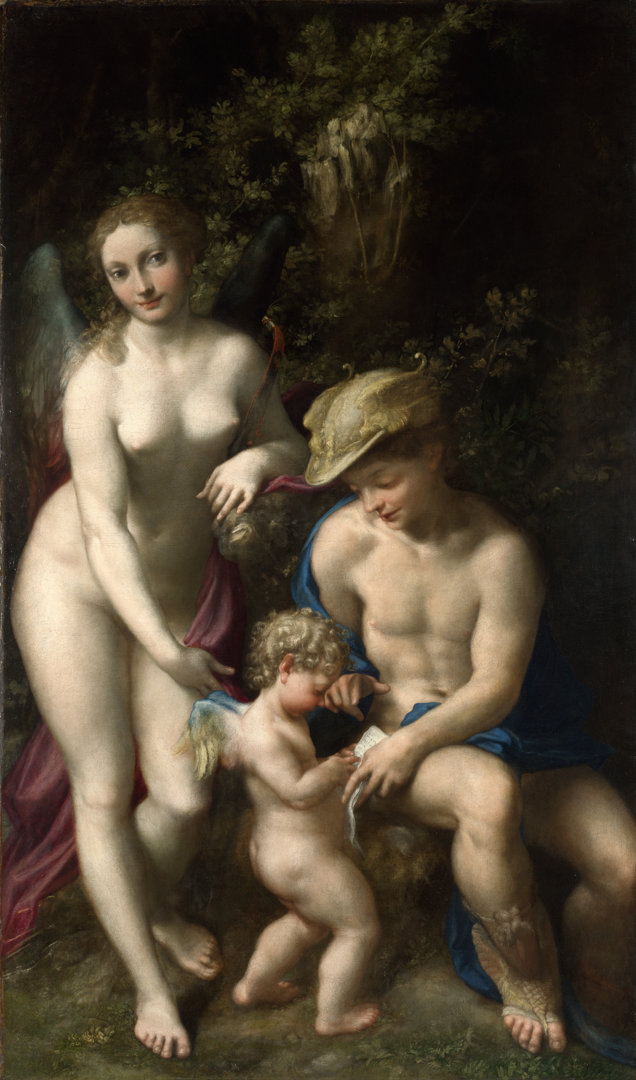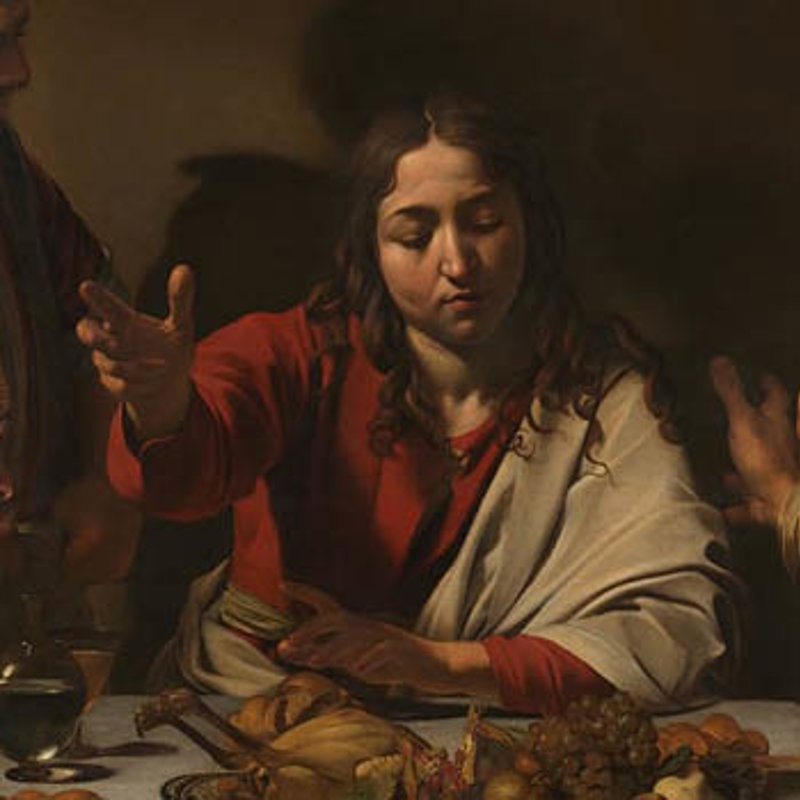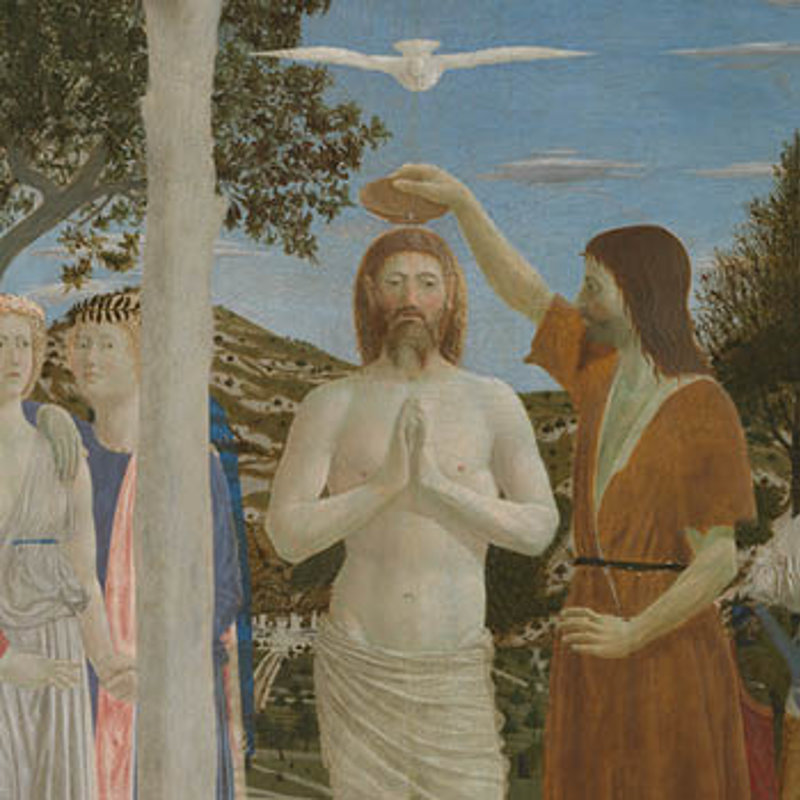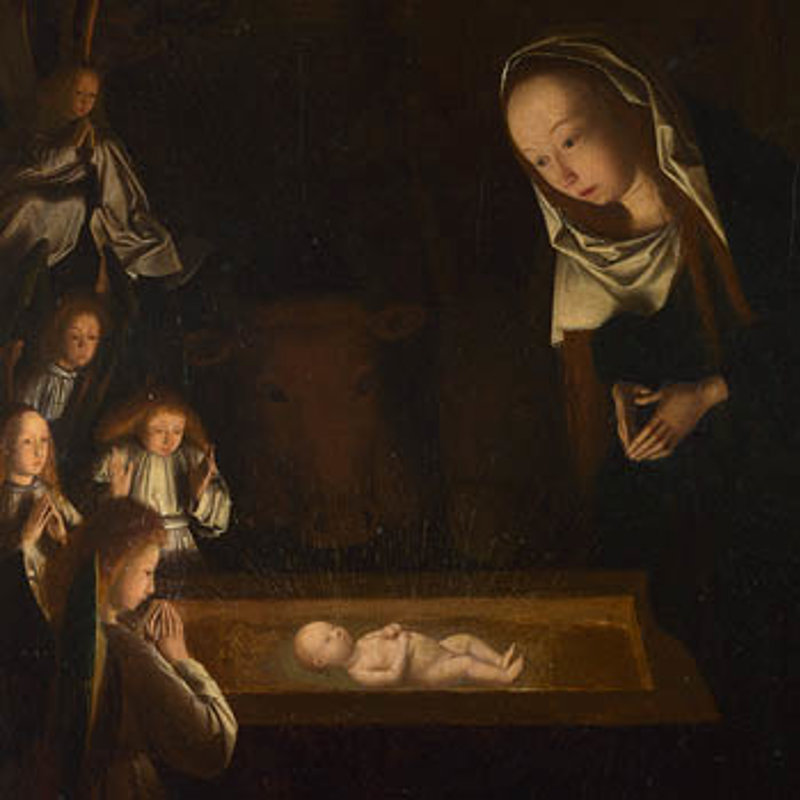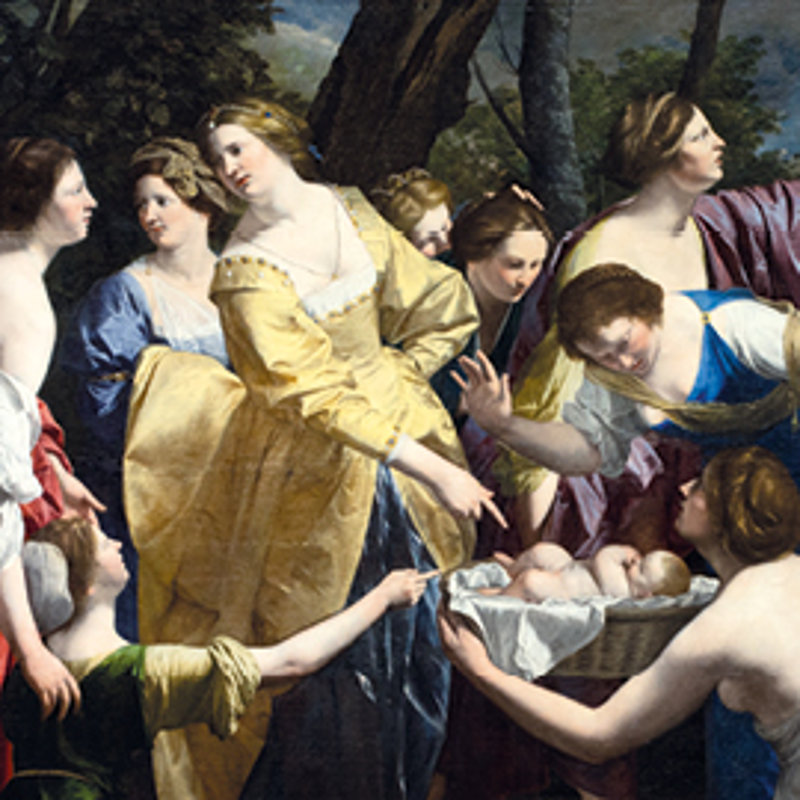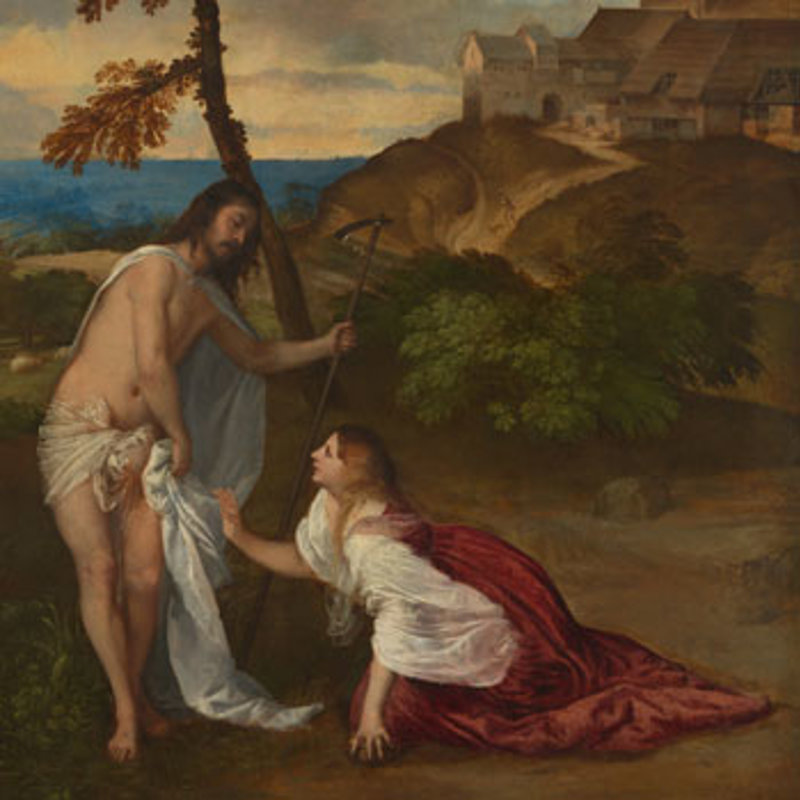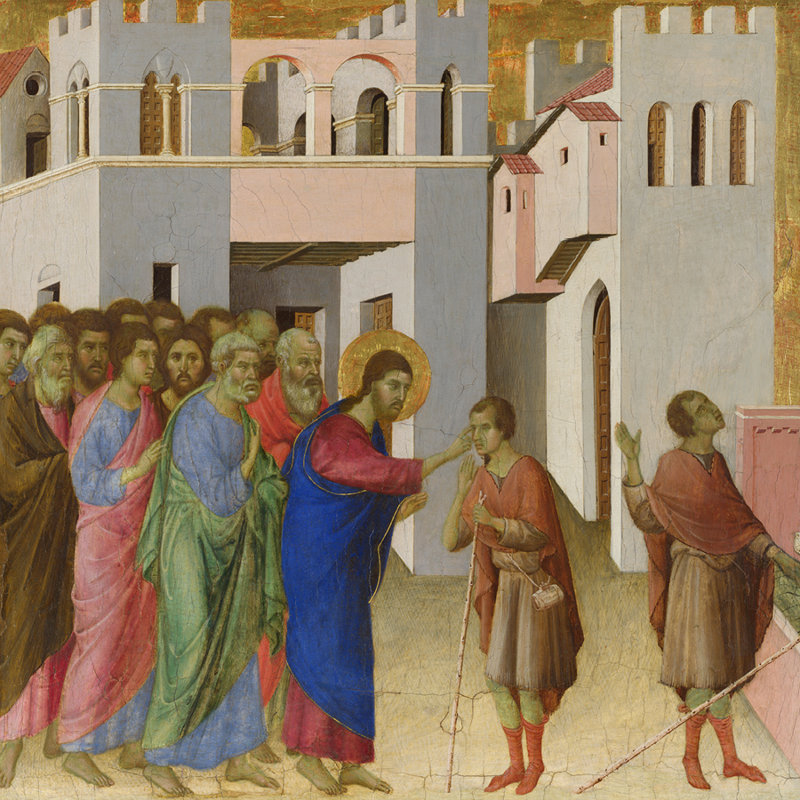The School of Love by Correggio shows a tender, loving, happy family scene in a sunny woodland glade – but this is no ordinary family. For this is Venus, goddess of love, with Mercury, god of wisdom and their young son, Cupid, the god of love.
Venus leans protectively towards a childish, innocent Cupid, with his bow, tucked beneath her arm. Cupid is engrossed in reading, as Mercury, who personifies eloquence and reason, guides him line-by-line. We can recognise Mercury, messenger of the gods, by his feathered cap and winged sandals.
Subjects combining themes of love, beauty and education would have appealed to Renaissance courtiers. It is thought that the painting belonged to Count Nicola Maffei (about 1487–1536) who was a close associate of Federigo Gonzaga, Duke of Mantua.
Perhaps Correggio or Maffei knew the story of Venus and Mercury teaching Cupid to read from the allegorical romance written by Francesco Colonna or from a bronze sculptural group by L‘Antico owned by Isabella d’Este, Marchioness of Mantua. It is a very unusual subject, however, and it’s also rare to show Venus with wings.
The painting was designed as a pair to a painting now in the Louvre, in Paris, where an erotically posed Venus lies asleep with Cupid, and is being leered at by a lustful satyr. While the Louvre’s painting depicts earthly passions, the National Gallery’s painting depicts the perfection of heavenly love balanced by wisdom.
With its soft smoky brushstrokes, the painting evokes a deep sense of harmony, and since the family loom large in the painting, it is as if we have stumbled into their Arcadian world.


